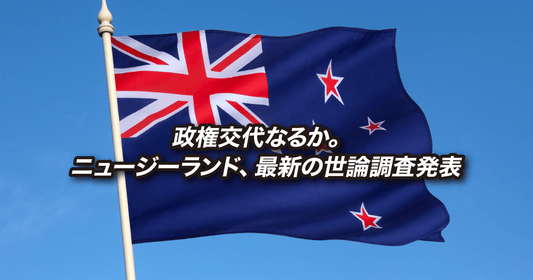
This year in Japan, there has been much talk of a record-breaking end to the rainy season and extreme heat, while the UK recorded temperatures over 40°C for the first time in recorded history. Abnormal weather is occurring in countries around the world.
It has been announced that the temperature in the first six months of 2022 was the second warmest on record.
The first half of 2022 will be the second warmest on record after 2016
New Zealand's NIWA has announced that temperatures from January to June 2022 were the second warmest in the world after 2016.
NIWA is an abbreviation for "The National Institute of Water and Atmospheric Research" and is an institution that conducts research in a wide range of fields in environmental science. Although it is mainly funded by the government, it is an independent company.
New Zealand is in the Southern Hemisphere, so the seasons are opposite to those in Japan, so January and February are summer, March and May are autumn, and June is winter.
The average temperature from January to June was 15°C, which is 1.2°C higher than the long-term average from 1981 to 2010. The warmest year on record was 2016, when it was 1.4°C higher than average.
2021 was the warmest year
NIWA has a temperature record called the "Seven Station Temperature Series" that began in 1909. This records the temperatures in seven cities: Auckland, Masterton, Wellington, Hokitika, Nelson, Lincoln, and Dunedin. These seven cities were selected for geographical reasons and because observations had started in all of them by 1909.
According to this record, the average annual temperature in New Zealand has risen by 1°C over the past 100 years. Some people may think that 1°C is not such a big increase, but an increase of 1.5°C or more is said to lead to increased health damage due to extreme heat and drought, the spread of infectious diseases, and a major impact on the ecosystem of living organisms.
By the way, although the first half of last year, 2021, was the ninth warmest, rising temperatures in the second half made it the warmest year on record in New Zealand.
Heavy rain and storms
Japan has recently been experiencing a lot of heavy rains, and this is also happening in New Zealand.
Christchurch is expected to have its wettest July on record, while the South Island and Wellington have seen heavy rainfall and strong winds, causing flooding in some areas.
Mount Cook, one of the most popular tourist spots, saw nearly a month's worth of rainfall fall in just 24 hours last week, making it the third-wettest day since records began in 1928.
It is no exaggeration to say that Milford Sound, near Queenstown on the South Island, is New Zealand's most popular tourist spot.
Photos taken on July 16th and 18th are compared. 180mm of rain fell between the time these two photos were taken, and the photo on the right shows many waterfalls flowing.
Such abnormal weather also affects tourism. New Zealand is known for its popular trekking routes, where people can fully enjoy the great outdoors, and there are many different courses throughout the country. However, bad weather can cause landslides and bridge collapses, leading to the closure of courses.
The second half of the year in New Zealand started with a lot of rain and heavy weather. According to NIWA meteorologist and weather forecaster Ben Noll, temperatures in the second half of the year will also be above average and warmer.





